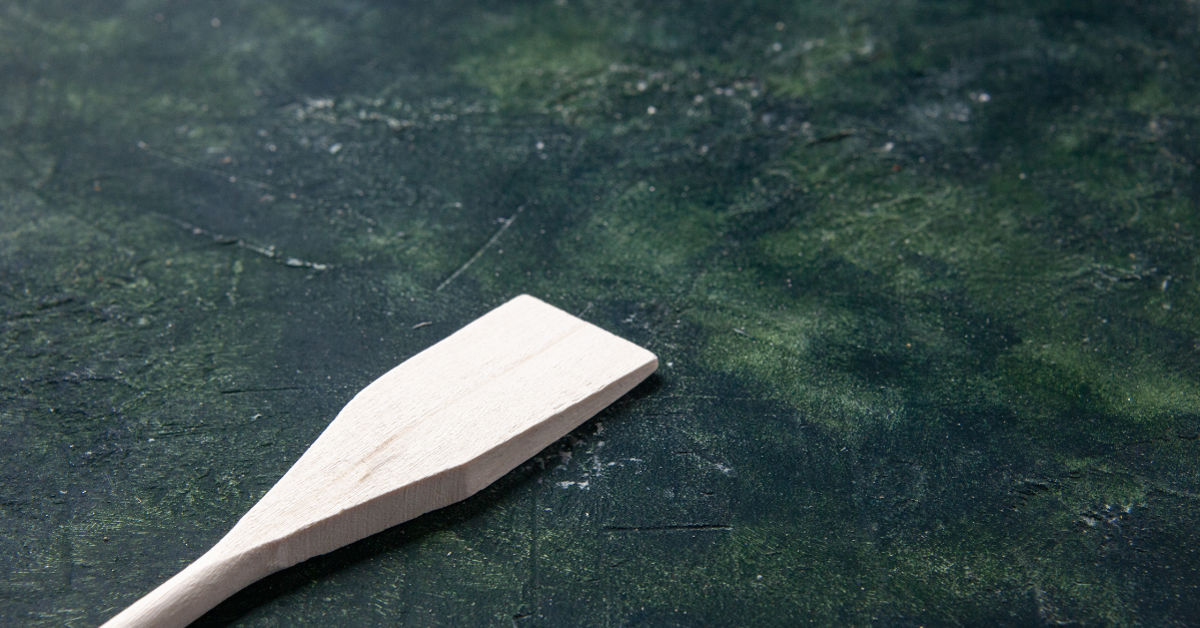When you think about essential kitchen tools, a rubber spatula might not immediately come to mind. But anyone who’s spent time cooking or baking knows that this humble utensil plays a surprisingly big role. Whether you’re scraping down mixing bowls or folding delicate batters, the rubber spatula is the unsung hero of efficient cooking.
In this article, we’ll dive deep into rubber spatula advantages, sharing insights from real kitchen experiences, how it compares with other utensils, and why it deserves a permanent spot in your culinary toolkit.
The Origin of the Rubber Spatula in Everyday Cooking
Rubber spatulas first gained popularity in commercial kitchens but soon became a staple in home cooking due to their utility. The earliest models were made from actual rubber, but modern versions are typically made from silicone, which is more heat-resistant and durable.
These tools were originally designed for baking, particularly for scraping bowls clean without damaging them. Over time, their uses expanded, and now they’re seen everywhere from bakeries to food trucks to home kitchens.
What Makes a Rubber Spatula Special?
Unlike wooden spoons or metal spatulas, rubber spatulas are uniquely designed to be flexible and gentle, yet surprisingly strong. They’re made to conform to the shape of your bowl or pot, ensuring that not a drop of sauce or batter goes to waste.
This versatility is what sets them apart. They’re equally effective at folding whipped cream into cake batter as they are stirring a hot tomato sauce on the stove.
Key Rubber Spatula Advantages
Let’s take a closer look at the practical benefits of using a rubber spatula in your kitchen routine.
1. Excellent Flexibility
The soft edge of a rubber spatula is ideal for scraping every bit of food from mixing bowls, blenders, and containers. No more wasted ingredients stuck to the sides.
2. Gentle on Cookware
Unlike metal tools, rubber spatulas won’t scratch nonstick coatings, glass, or ceramic. This makes them perfect for use with delicate or high-end cookware.
3. Heat Resistance
High-quality silicone spatulas can handle temperatures up to 500°F (260°C). You can stir hot sauces or flip pancakes without worrying about melting or warping.
4. Multi-Functionality
They’re useful not just for baking, but also for sautéing, scrambling, spreading frosting, and mixing. One tool, many purposes.
5. Easy to Clean
Most rubber spatulas are dishwasher-safe and don’t stain or retain odors. Some come as a single molded piece, preventing food from getting trapped.
6. Long-Lasting Durability
Well-made rubber spatulas, especially silicone models, can last for years—even with daily use. Their durable construction resists cracking, breaking, or peeling.
Everyday Uses That Showcase the Rubber Spatula’s Value
When you start using a rubber spatula regularly, it quickly becomes your go-to kitchen companion. Here’s how it can help across different cooking tasks:
- Scraping jars and bowls: Nothing beats a rubber spatula for getting the last bit of peanut butter from the jar.
- Folding ingredients: Ideal for folding egg whites or whipped cream without deflating them.
- Cooking on stovetops: Stirring sauces, eggs, or sautéed vegetables safely and smoothly.
- Spreading and smoothing: Perfect for frosting cakes or evenly distributing batter in pans.
Real-Life Experience: A Kitchen Staple That Surpasses Expectations
A few years ago, I set out to become a better baker. After browsing reviews and watching a stream of cooking tutorials, I picked up a basic rubber spatula—the Kaiserflex dough scraper. It wasn’t flashy, but it performed flawlessly. Six years later, it’s still going strong.
What started as a simple baking tool quickly became my all-purpose utensil. Whether I’m making pasta, sauces, or even sautéing vegetables, this spatula handles everything without fuss. Its resilience and versatility have made it indispensable in my daily cooking.
Rubber Spatula vs Other Kitchen Tools
How does a rubber spatula compare to other commonly used kitchen utensils? Let’s break it down.
| Tool Type | Use Cases | Limitations Compared to Rubber Spatula |
| Wooden Spoon | Stirring, mixing | Can’t scrape clean, absorbs flavors |
| Metal Spatula | Flipping, frying | May damage nonstick surfaces |
| Plastic Spoon | General use | Prone to melting at high heat |
| Whisk | Mixing and aerating | Not suitable for scraping or spreading |
| Rubber Spatula | Mixing, scraping, cooking | Not ideal for cutting or flipping large items |
Silicone vs Traditional Rubber Spatulas
Modern spatulas are typically made from silicone rather than traditional rubber. Here’s why:
| Feature | Traditional Rubber | Silicone |
| Heat Resistance | Low to moderate | High (up to 500°F or more) |
| Odor Retention | Can absorb smells | Resists odors and staining |
| Durability | May degrade over time | Extremely durable and long-lasting |
| Dishwasher Safe | Sometimes | Almost always |
| Flexibility | Good | Excellent |
If you’re buying one today, a silicone model is the better investment for both safety and performance.
Choosing the Right Rubber Spatula
Not all spatulas are created equal. Consider the following when choosing one:
1. Material Quality
Look for food-grade silicone that’s BPA-free and heat-resistant. This ensures safety and longevity.
2. Handle Design
Ergonomic, slip-resistant handles are easier to use, especially when cooking with greasy hands.
3. One-Piece vs Two-Piece
One-piece spatulas (where the handle and blade are molded together) are easier to clean and more hygienic.
4. Size and Shape
Spatulas come in different lengths and blade shapes. A rounded edge works great for bowls, while a flat edge suits pans better.
Maintaining Your Rubber Spatula
With minimal effort, your spatula can last for years. Here’s how to care for it properly:
- Wash soon after use to avoid stains
- Avoid using with sharp tools that might tear the surface
- Store in a drawer or hang to keep its shape
- Don’t leave it resting on hot surfaces for extended periods
Some spatulas are dishwasher-safe, but hand-washing prolongs their life.
Rubber Spatulas and Sustainability
While rubber and silicone are synthetic materials, many manufacturers now produce spatulas that are BPA-free and recyclable. Reusable tools like spatulas reduce your dependency on disposable plastic spoons and help lower kitchen waste.
Some brands even use eco-conscious packaging and long-lasting materials to minimize their environmental footprint.
Table: Summary of Rubber Spatula Advantages
| Advantage | Details |
| Flexibility | Scrapes bowls clean, no ingredient waste |
| Gentle on Surfaces | Safe for nonstick, glass, and ceramic |
| Heat Resistance | Withstands high cooking temperatures |
| Multi-Purpose Use | Ideal for baking, cooking, and serving |
| Easy Maintenance | Dishwasher-safe, easy to clean |
| Long-Term Durability | Resists warping, cracking, and discoloration |
| Eco-Conscious Options | Many models now BPA-free and recyclable |
Conclusion
It’s easy to overlook the rubber spatula when assembling your kitchen essentials. But once you’ve used it—really used it—you’ll wonder how you ever managed without it. Whether you’re baking a birthday cake or cooking dinner for the family, this simple tool offers versatility, efficiency, and ease of use that few others can match.
If you’re building a more practical, sustainable, and organized kitchen, start with the right tools. And among them, the rubber spatula might just be the most underestimated superstar.
Frequently Asked Questions (FAQ)
What are the main rubber spatula advantages?
Rubber spatulas are flexible, heat-resistant, gentle on cookware, and useful for a wide range of cooking and baking tasks. They’re also easy to clean and last for years.
Can I use a rubber spatula on high heat?
Yes, especially silicone models. Many are safe up to 500°F, making them perfect for stovetop cooking.
Are rubber spatulas dishwasher safe?
Most are, especially those made from silicone. However, hand-washing can help preserve their shape and flexibility over time.
Do rubber spatulas stain or hold odors?
High-quality silicone versions are designed to resist stains and odors. Lower-quality materials may be more susceptible.
Is a one-piece or two-piece spatula better?
One-piece spatulas are often more hygienic because there are no seams for food to get stuck in. They’re also easier to clean.


